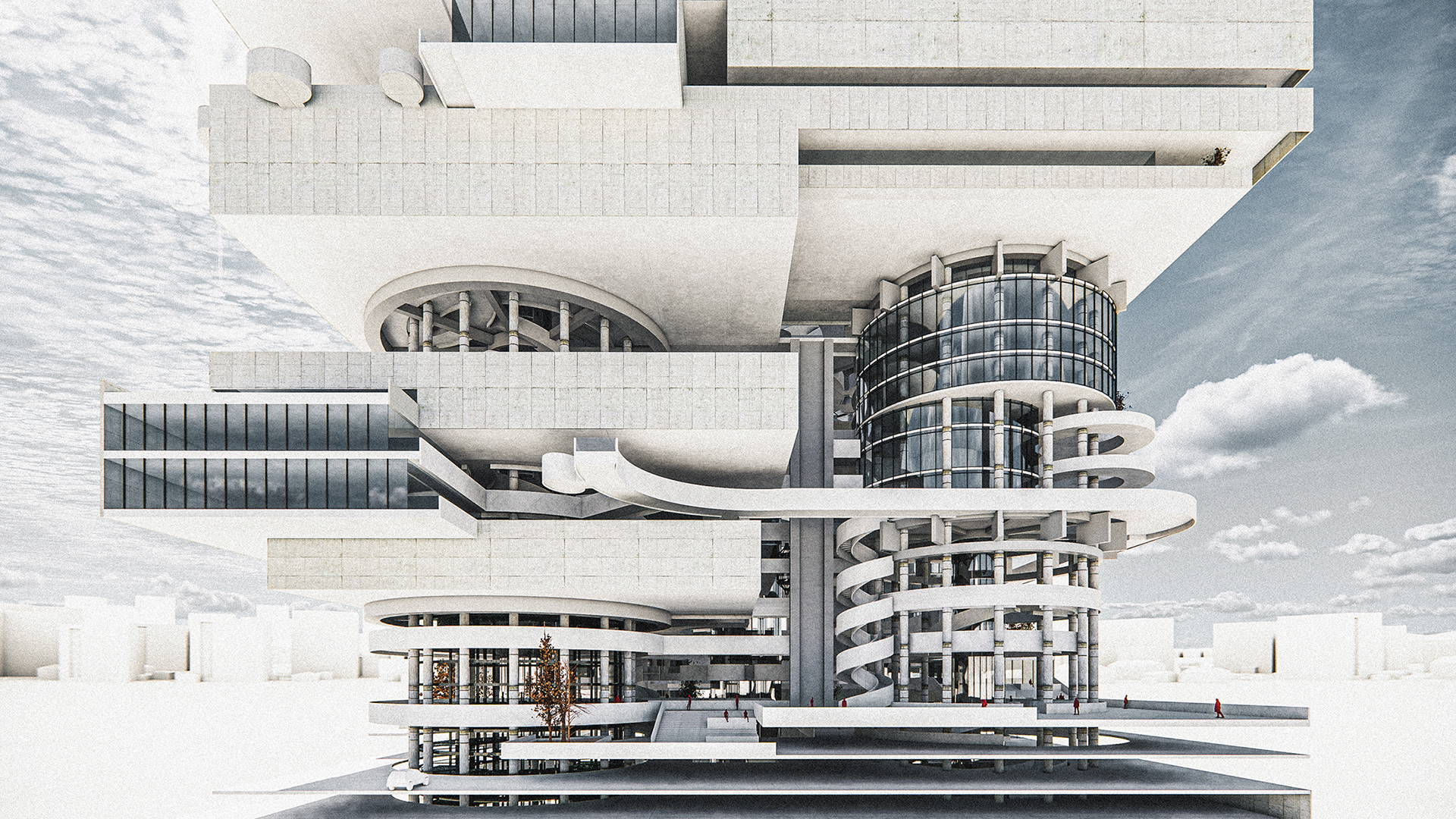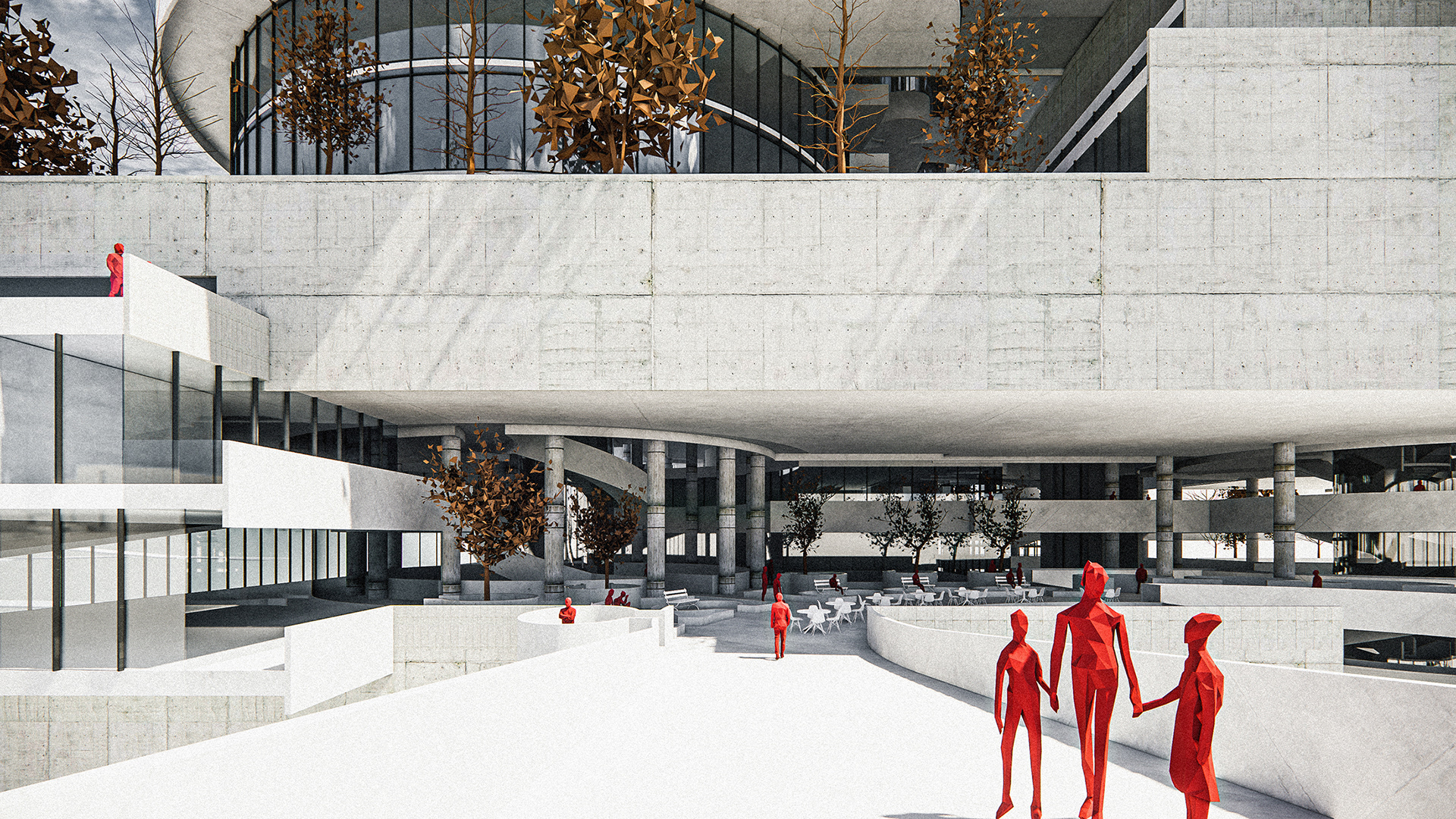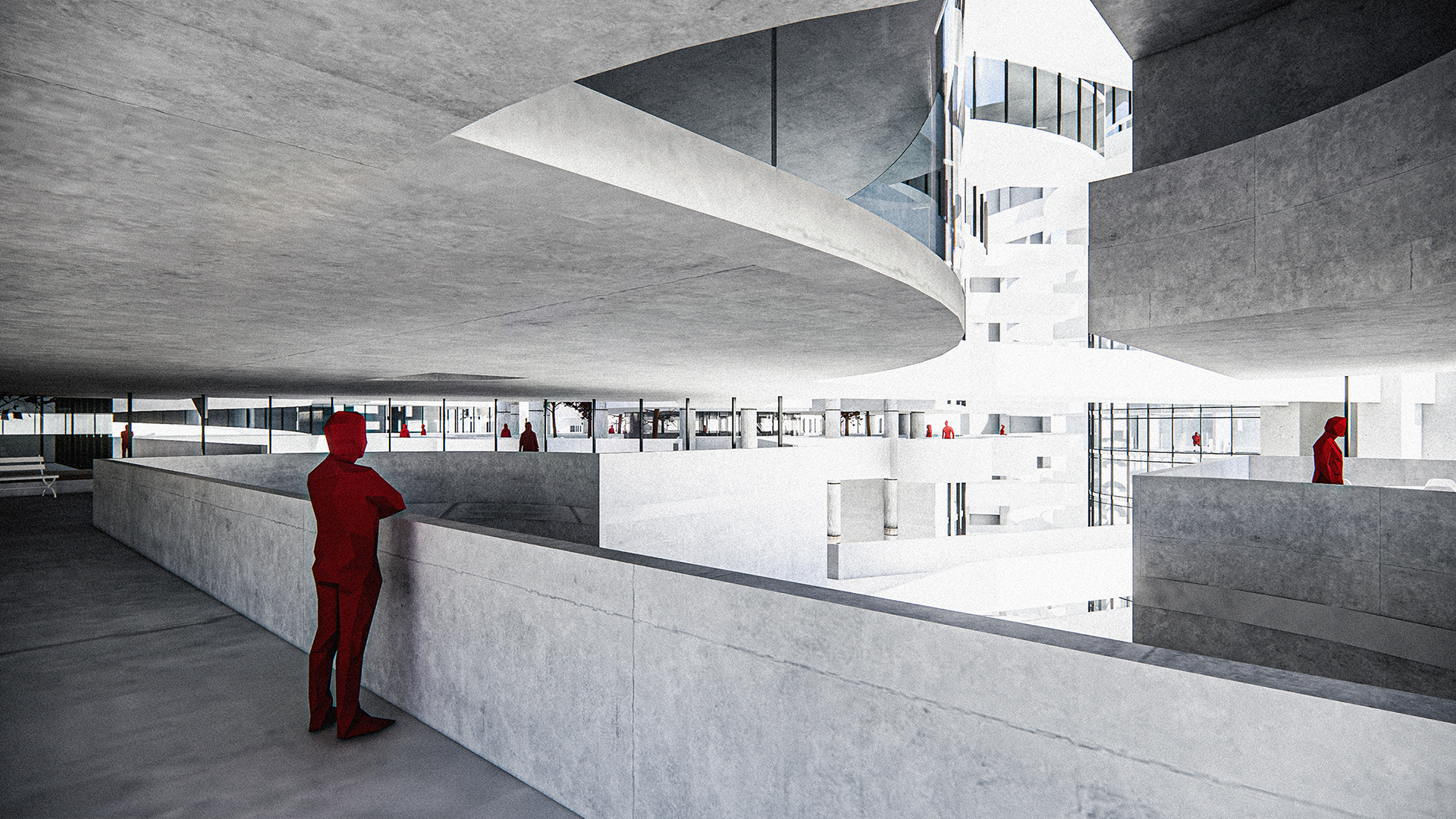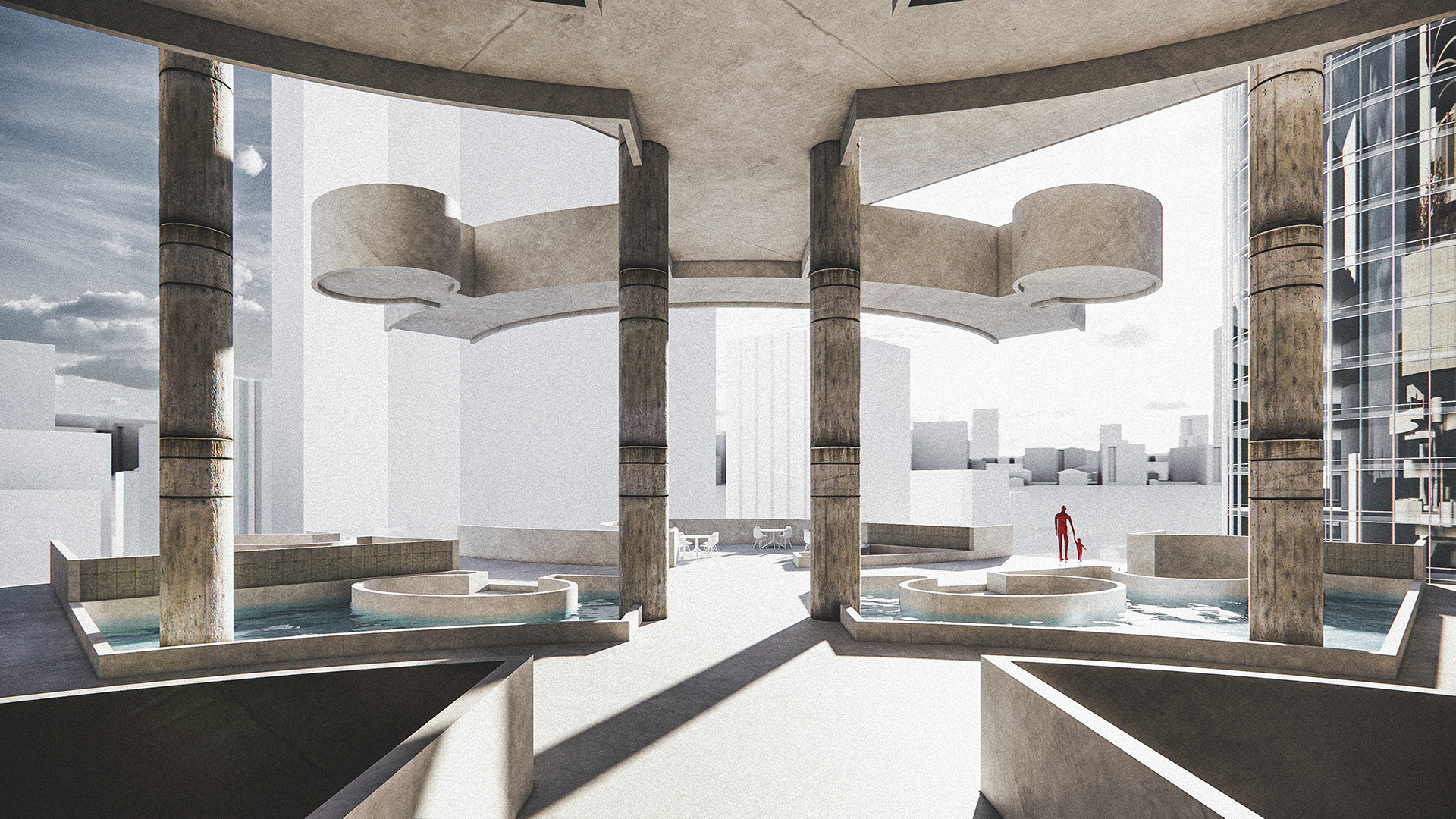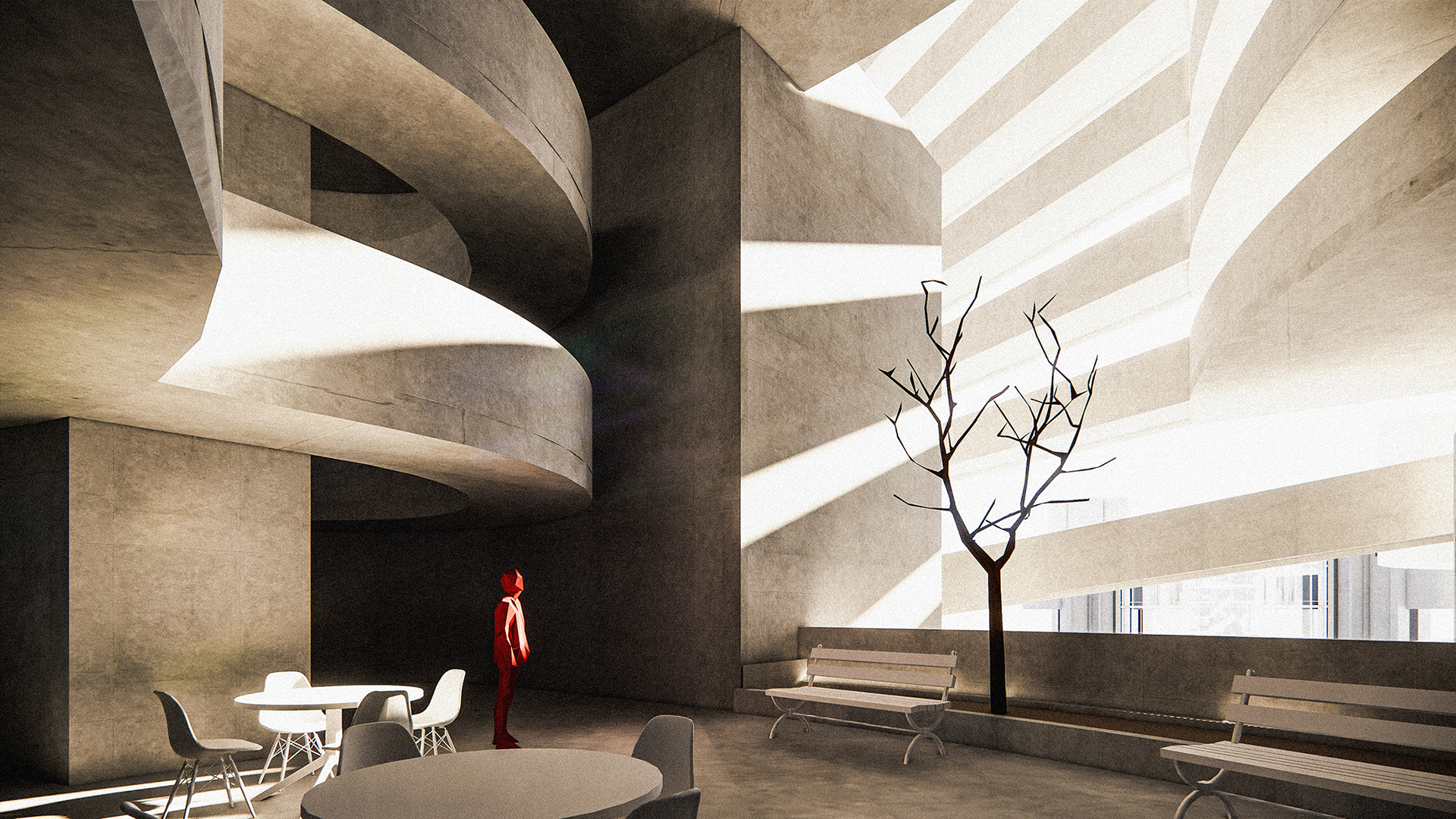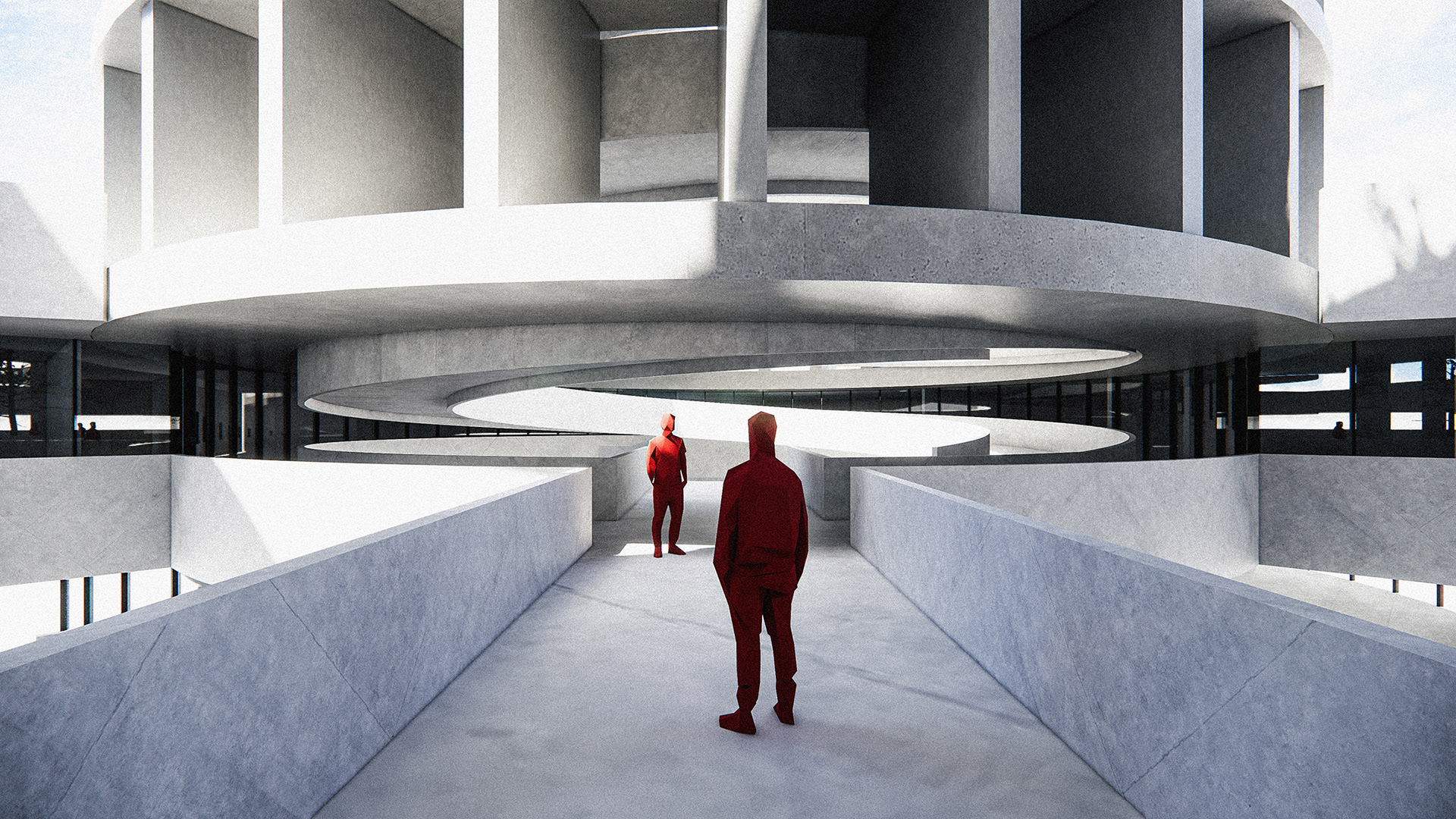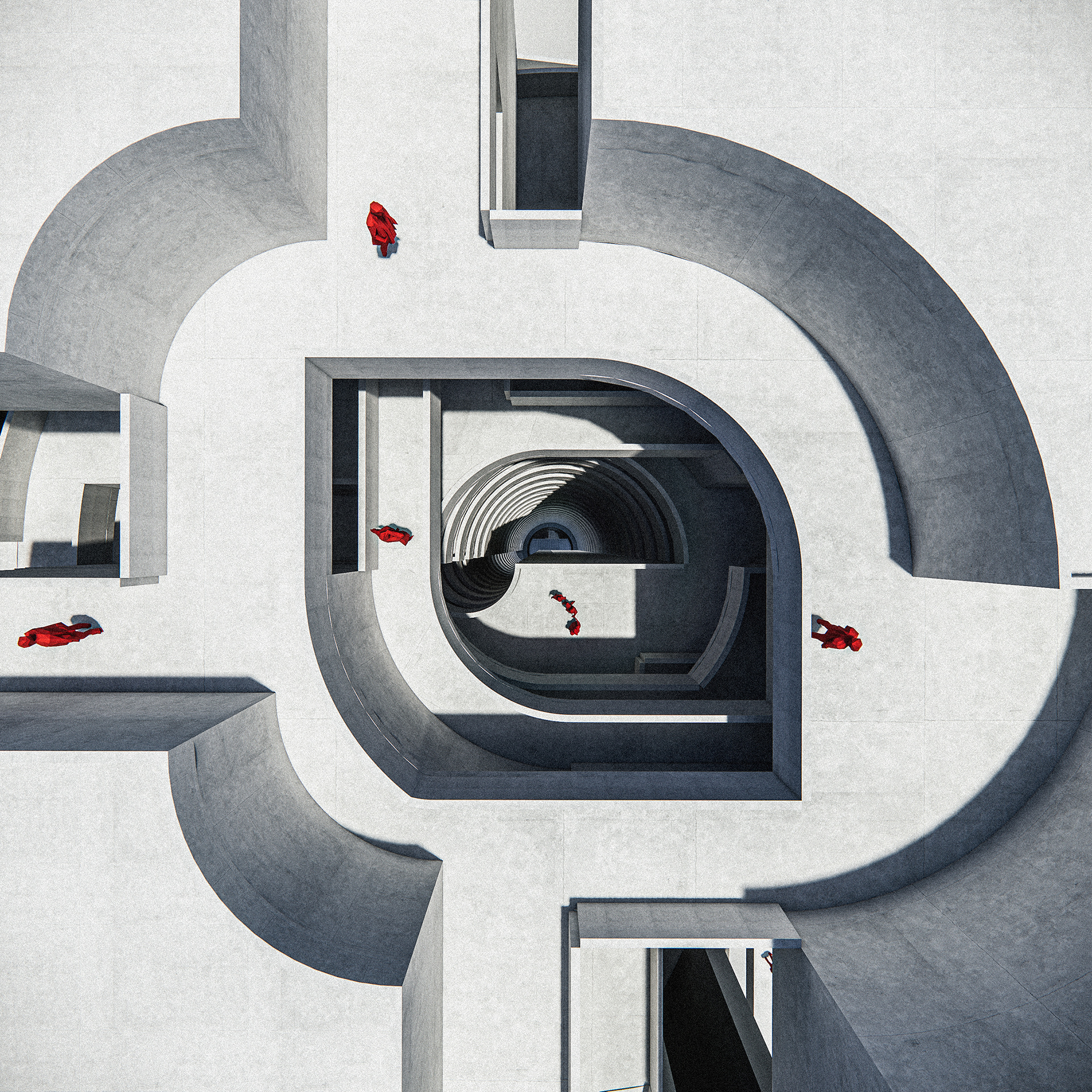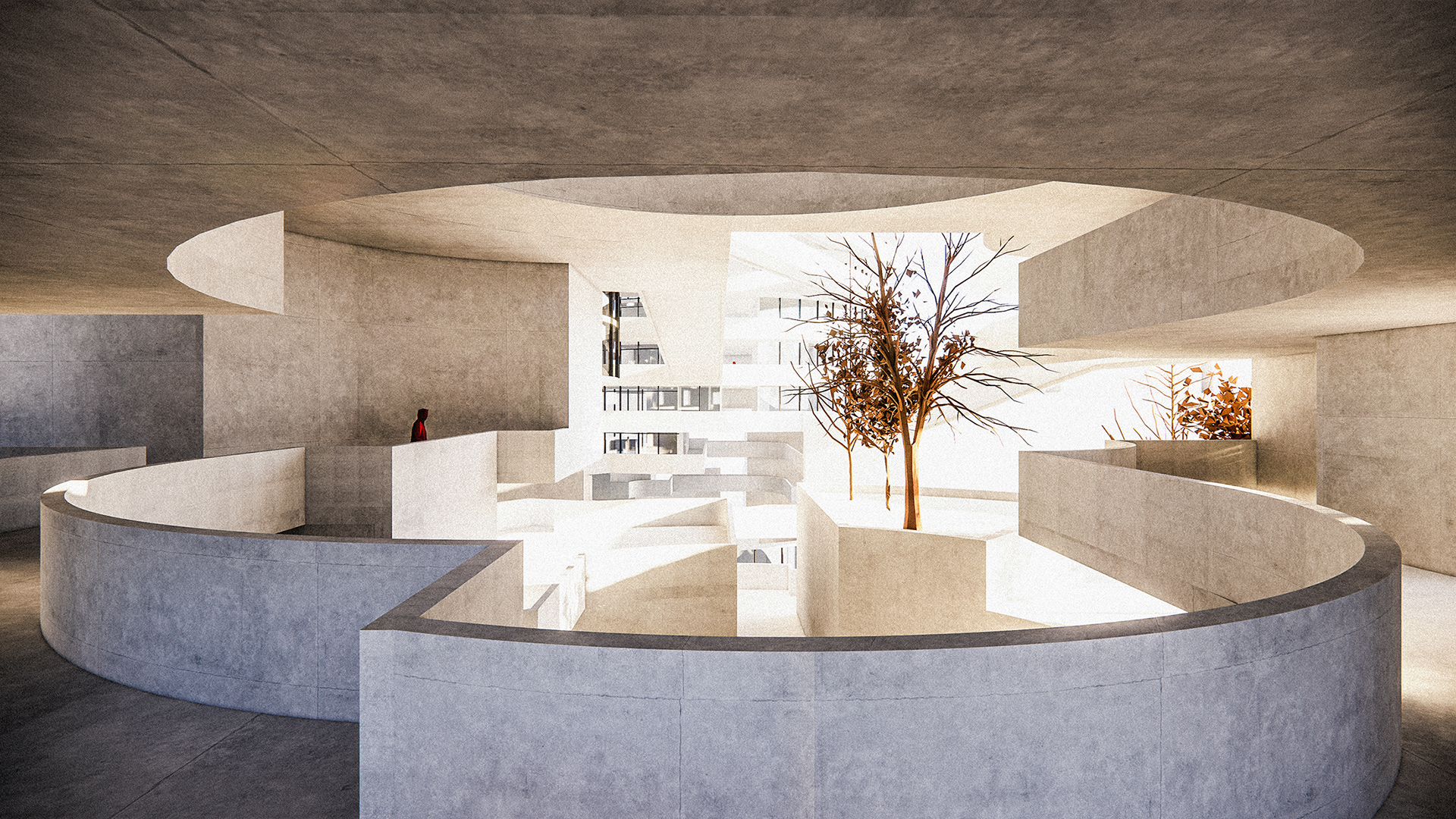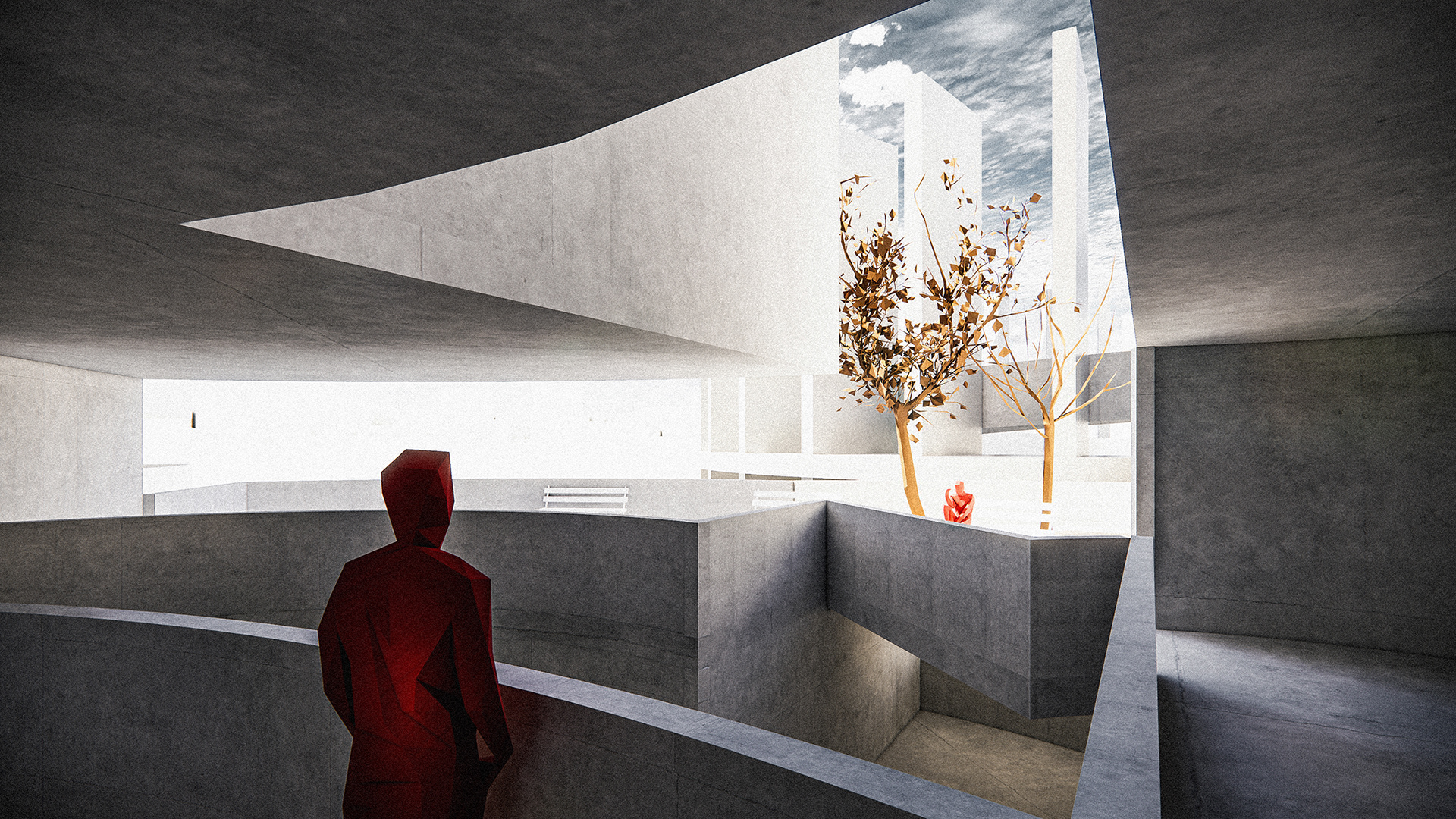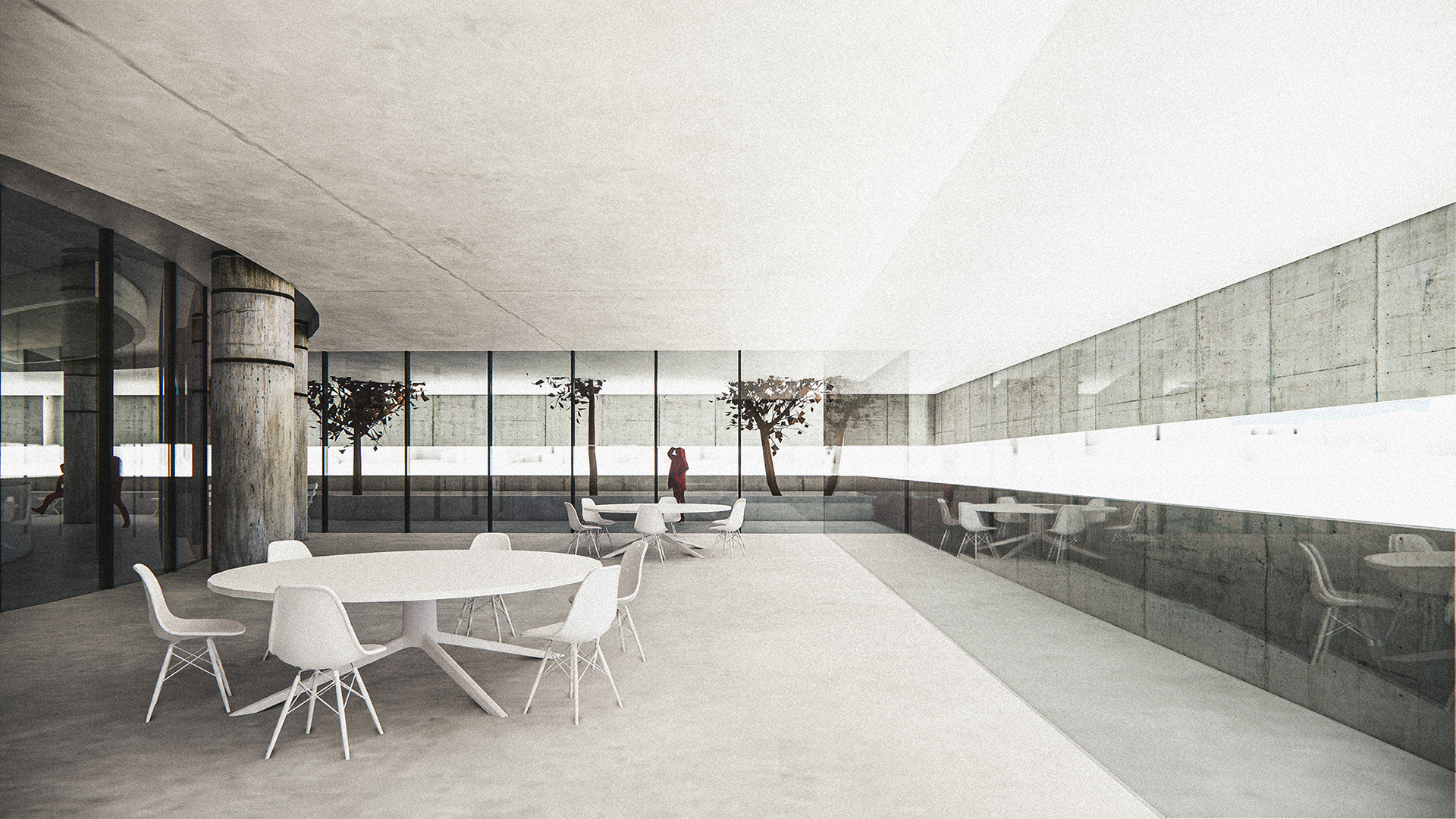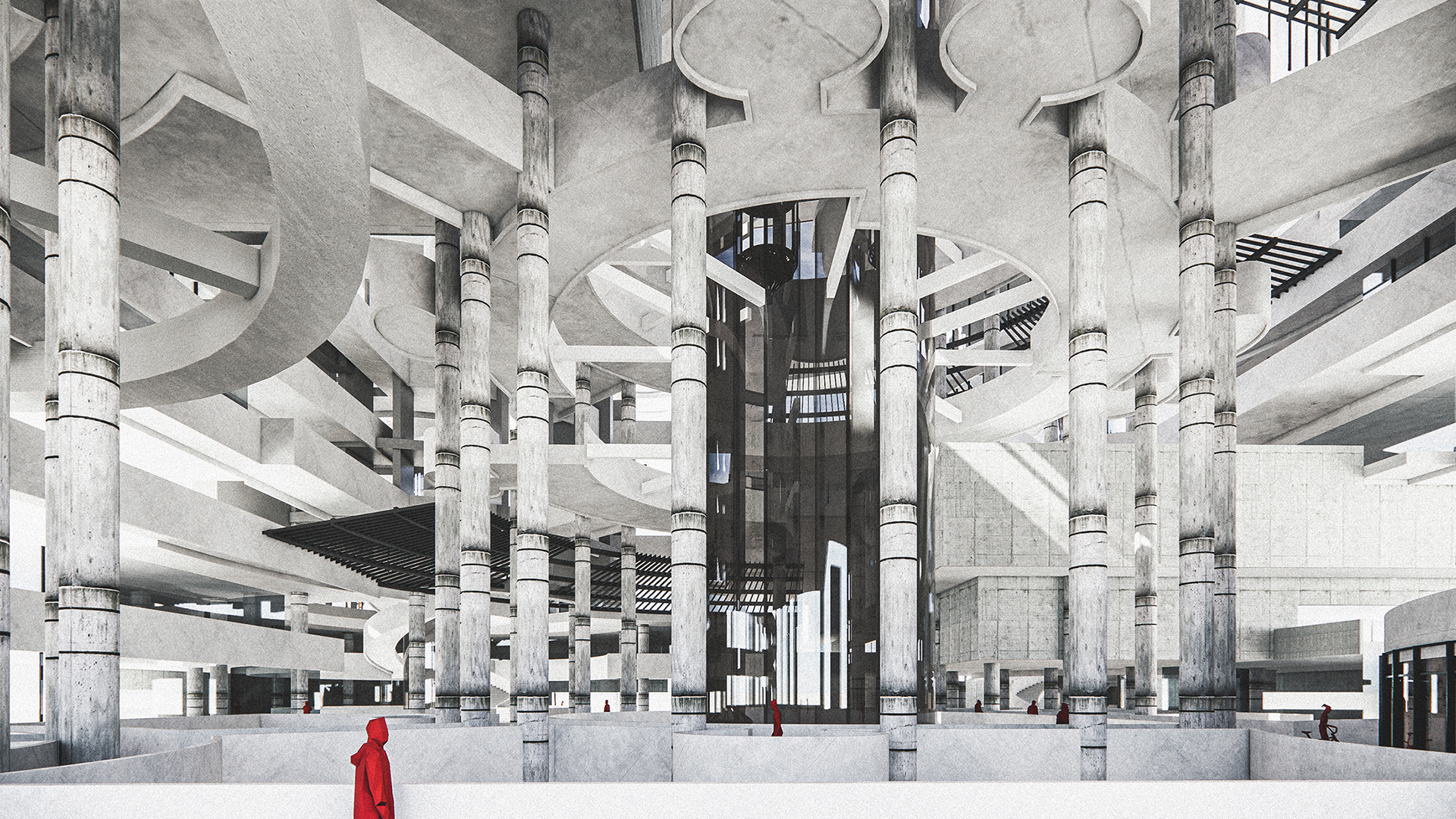This thesis attempts to address Los Angeles’s shortage of supportive housing for the homeless from a new perspective by reimagining John Portman’s Westin Bonaventure Hotel in Downtown LA.
Downtown LA is a fragmented place.
On the one hand, homeless and low-income population fragmentally distributes across the city, while the supportive housing development is far behind and most are unpleasant to live. Fighting for the basic needs of low-income people can be burdensome when some must migrate daily to find shelters; when they have to travel around the city to send their kids to daycare; when they struggle to get medical support for COVID; or when they simply desire social interaction.
Meanwhile, A few blocks away from Skid Row is the wealthy financial district with glistening glass boxes, among which the five-tower Bonaventure is by far the most appealing element of the Los Angeles skyline. With a clean, futuristic form and a lively and exciting base, Bonaventure is not just a hotel but an implementation of interior urbanism that brings the experience of the city at large into the building. However, the base’s concrete front presents an air of indifference to the city at street level.
Thus, this thesis brings the two completely different worlds to one site, examines how fragmentation operation on Bonaventure can expressively infuse the streetscape into the building, break the perception of order and hierarchy, and ultimately create a sense of equity and inclusivity to the disadvantaged groups.
On the one hand, homeless and low-income population fragmentally distributes across the city, while the supportive housing development is far behind and most are unpleasant to live. Fighting for the basic needs of low-income people can be burdensome when some must migrate daily to find shelters; when they have to travel around the city to send their kids to daycare; when they struggle to get medical support for COVID; or when they simply desire social interaction.
Meanwhile, A few blocks away from Skid Row is the wealthy financial district with glistening glass boxes, among which the five-tower Bonaventure is by far the most appealing element of the Los Angeles skyline. With a clean, futuristic form and a lively and exciting base, Bonaventure is not just a hotel but an implementation of interior urbanism that brings the experience of the city at large into the building. However, the base’s concrete front presents an air of indifference to the city at street level.
Thus, this thesis brings the two completely different worlds to one site, examines how fragmentation operation on Bonaventure can expressively infuse the streetscape into the building, break the perception of order and hierarchy, and ultimately create a sense of equity and inclusivity to the disadvantaged groups.
